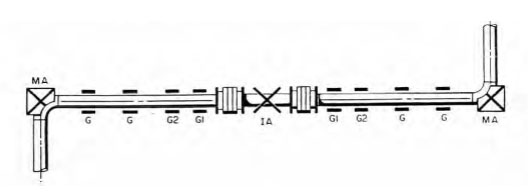The Importance of Piping Engineering in Thermal Movement
In a land that bridges the past with the present while poisoning itself for exponential growth into the future — developments in industries such as the MEP occupy an integral part of its growth story. As the city becomes more densely populated, with limited space and rising occupancy, buildings have extensively begun to utilize innovative piping systems for their MEP needs. It is at this juncture that it becomes imperative to ensure a precise way to accommodate predictable and controlled thermal expansion and contraction/movement in piping systems to ensure their longevity and performance — ensuring there is no structural damage across the system due to thermal movements.
Thermal movements in buildings are the expansion or contraction of metal based on temperature change. In short, metal surfaces expand due to the rise in temperature and contract when there is a drop in the temperature. Another key aspect to consider is that of building movement. Also known as structural movement, building movement is typically caused due to sway from external forces like wind, settling of the land, expansion, and contraction which is of low magnitude but of high impact on the building.
A closer examination of thermal movement accounts for every piping experience, which is the degree of thermal expansion or contraction. This is in large part due to temperature changes from the installation condition to the operating condition. In a piping system, the impact of the thermal movement is mainly in the axial direction. On the other hand, when we look at building movement, it’s crucial to look into the design of piping systems that run across building joints so as to ensure it accepts displacement.
Building movement can occur in three dimensions namely: axially, laterally (perpendicular to but in the same plane as the pipe), and vertically (usually parallel to the pipe support, in the plane connecting the pipe to the structural element), depending on building design. When these movements are large, the piping loop or the expansion joints should be designed into the system with anchors and guides. In this case, the loops can be quite large, requiring a large space to fit into the structure. The use of expansion joints can eliminate the need for pipe loops in cases such as these. It is good practice to ensure that the anchors are designed to handle thrust forces and that guides are used to maintain pipe alignment and restrict pipe buckling.

In a nutshell, for any piping design, it is essential to account for movement at the initial stage of design. Failure to consider these movements could result in time-consuming and costly retrofitting or repair in addition to any labour and materials that might have been wasted, damaged, or lost. Designers must consider that any particular support could move more than what is reflected, needing the starting and ending positions of components in a process cycle to be examined.
Author: Shanvaz Sheikh Amir
Designation: Assistant Manager, Leminar Air Conditioning Company
References:
